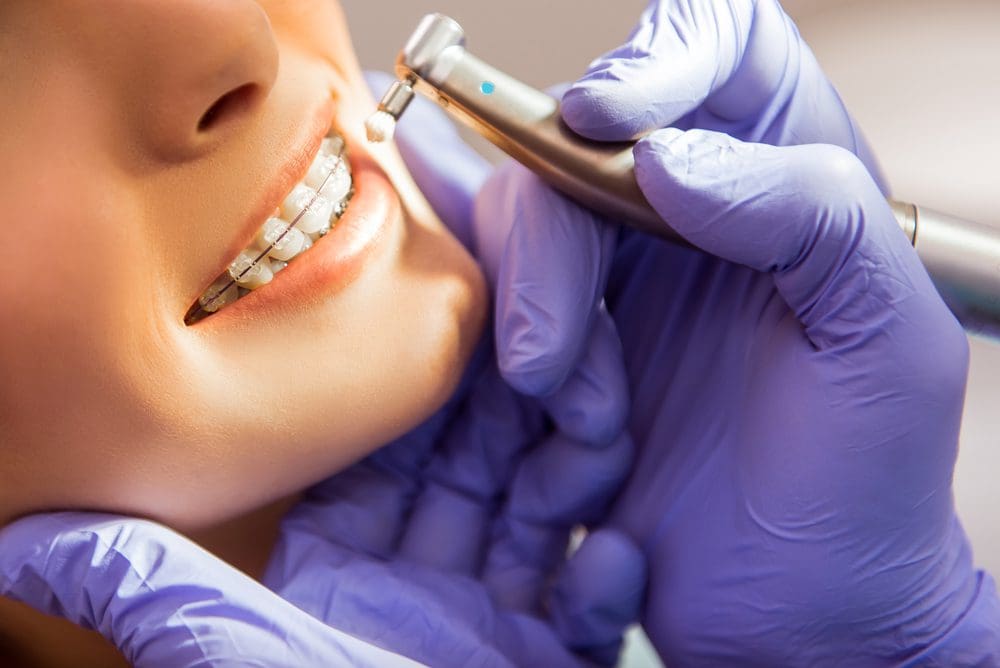Picking the most effective Cumming Orthodontics for Effective Braces and Aligners Solutions
Picking the most effective Cumming Orthodontics for Effective Braces and Aligners Solutions
Blog Article
Comprehensive Overview to Orthodontics Procedures for Remedying Oral Imbalances
Understanding the complexities of each procedure, including their mechanisms, benefits, and possible downsides, is essential in making informed decisions about one's orthodontic therapy. As we browse via the detailed guide to orthodontic procedures for correcting oral imbalances, the elaborate details of each approach will certainly unfold, shedding light on the course towards a harmonious and practical oral positioning.
Orthodontic Procedures Summary

Along with traditional dental braces and clear aligners, orthodontists may additionally recommend various other interventions like headgear, palatal expanders, or retainers to resolve certain alignment problems (invisalign). These treatments are tailored to every patient's special demands and may include a mix of treatments to accomplish the wanted results. Routine changes and tracking are critical parts of orthodontic treatment to make certain progress is on track and to make any type of essential modifications along the road. By undertaking orthodontic procedures, clients can not only accomplish a straighter grin but also enhance their general dental wellness and function.
Traditional Dental Braces: How They Function
When considering orthodontic therapies for dental misalignments, typical braces stand out as a reliable technique for correcting teeth placing. Conventional braces contain brackets, cords, and bands that work with each other to use continuous stress on the teeth, gradually relocating them into the wanted positioning. The braces are connected to the teeth using an unique adhesive, and the cables are threaded through the braces. By adjusting the stress of the wires, orthodontists can regulate the direction and pressure related to each tooth, directing them right into proper placement over time.
As stress is applied to the teeth with the dental braces, the bone bordering the teeth is improved to sustain the brand-new tooth placements. People will need regular adjustments at the orthodontist's office to ensure the braces continue to use the proper stress for reliable teeth activity.
Invisible Aligners: Pros and Cons
These clear, custom-made trays are basically undetectable when worn, making them an attractive choice for people looking for a more cosmetically pleasing orthodontic treatment. People can eliminate the aligners prior to eating or cleaning their teeth, decreasing the threat of food getting stuck in the device and simplifying the cleansing process.

Surgical Orthodontic Options
Surgical interventions in orthodontics present feasible alternatives for resolving intricate dental misalignments that might not be effectively dealt with through conventional orthodontic therapies. While traditional braces and unnoticeable aligners can correct many orthodontic issues, particular instances call for surgical intervention to achieve optimum outcomes. Surgical orthodontic choices are dental s usually suggested for severe malocclusions, significant jaw disparities, and situations where the underlying bone structure needs alteration to achieve appropriate alignment.
One common medical orthodontic procedure is orthognathic surgery, which entails rearranging the jaws to correct useful problems such as problem chewing or talking. cosmetic dentistry veneers This surgical treatment is typically carried out in cooperation with an orthodontist that helps straighten the teeth before and after the procedure. Surgical orthodontics might also entail procedures to expose influenced teeth, remove excess periodontal tissue, or reshape the jawbone to produce a more unified face profile.
Prior to taking into consideration medical orthodontic choices, people go through an extensive analysis to figure out the requirement and potential advantages of such interventions. cumming orthodontics. While surgery might seem daunting, it can dramatically enhance both the feature and looks of the smile in cases where traditional orthodontic therapies fall short
Retainers and Post-Treatment Treatment

Post-treatment treatment involves complying with the orthodontist's instructions vigilantly. This might consist of proper oral health practices, going to follow-up visits, and wearing the retainers as prescribed. Failure to adhere to post-treatment treatment directions can result in relapse, where the teeth slowly move back towards their initial placements. Regular retainer wear, excellent oral health, and normal oral check-ups are important for keeping the results accomplished with orthodontic surgical procedure and making certain the long-lasting stability of the remedied dental positioning.
Final Thought
In final thought, orthodontic procedures offer numerous choices for fixing dental misalignments. Typical dental braces utilize steel braces and cables to shift teeth right into appropriate placement. Unseen aligners supply a more very discreet option but might not appropriate for all cases. Surgical orthodontic alternatives are offered for more extreme misalignments. Retainers are commonly utilized post-treatment to maintain the brand-new alignment. On the whole, orthodontic procedures can effectively enhance dental wellness and aesthetic look.
As we navigate via the extensive overview to orthodontic procedures for dealing with dental imbalances, the detailed details of each technique will certainly unfold, dropping light on the course toward a functional and harmonious oral alignment. - orthodontics
One of the most typical orthodontic therapies is the use of braces, which are composed of metal brackets and wires that you could check here apply mild pressure to progressively change teeth into the wanted placement.When taking into consideration orthodontic treatments for dental misalignments, standard braces stand out as a tried and true approach for correcting teeth positioning. Additionally, undetectable aligners might not be ideal for intricate orthodontic issues that require more significant teeth motion, as they are normally advised for light to modest instances. Retainers are customized orthodontic tools designed to hold teeth in their corrected positions after the completion of orthodontic treatment.
Report this page